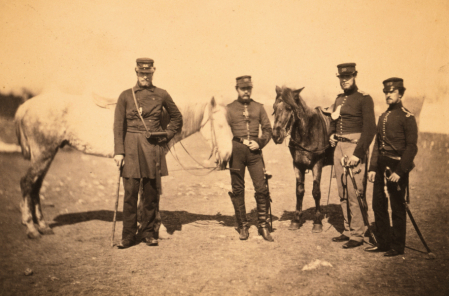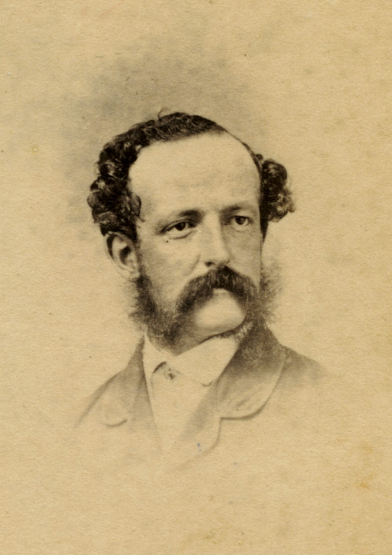Capt William Gammell
1833-1882
William Gammell was the 5th son of Captain James Gammell of Ardiffery and his wife Sydney Holmes. He was born at Beech Hill, Donoughmore, Co. Down on 11 July 1833, but while still an infant his parents moved to Edinburgh.
We do not know where he was educated, as he is the only one of James' sons not to go to Edinburgh Academy. Whether this was because he was a delicate child, or for some other reason, we do not know, but neither his health nor his educational achievements prevented him from following the family tradition of going into the Army.
He was duly gazetted Ensign on 12 March 1852 in the 39th Foot (The Dorset Regiment) and in June 1853 became a lieutenant (by purchase). He was sent to the Crimea where he participated in the siege of Sebastopol (1854-55) and the assault on the Redan on 18 June 1855. For these actions he was awarded a Crimea medal and clasp, and Turkish medal. Between 1856 and 1859 the regiment was stationed in Canada, before moving to Bermuda between 1859 and 1864. In April 1857 he became a Captain (by purchase). He spent no less than fifteen years with the same regiment - an unusual happening in those days, possibly indicating that he had little ambition, or an inadequate supply of money to purchase commissions, but whichever it was, he never achieved higher rank than Captain.
In January 1865 he resigned from his regiment to join the Transport Commissariat, initially as a Barrack Clerk. It is not clear why he did this, since it appears a step down, but maybe for health reasons? In February 1870 he was promoted to an Assistant Commissary (equivalent in rank to a Lieutenant) and stationed in London. Between 1874 and 1877 he was stationed in Hong-Kong and on his return, in Dublin. In consequence of a departmental reorganisation, in October 1878 he retired.

William Gammell in the Crimea in 1855 (Gammell & friends 39th regiment Crimea 1855 (Fenton LC-USZC4-9357). It is likely that William is one of the two standing to the right of the picture (as we look at it), since he was 22 at the time, and the two officers to the left look older than that; also William was a Lieutenant and Army
Regulations at the time stipulated that only field officers (majors and upwards) were permitted to ride. The Officer in the centre is wearing riding boots and holding a horse, so was certainly riding, the officer on the left is clearly older and appears to be wearing a staff double breasted frock coat (William was not on the staff) and is probably also associated with the horse behind him?

William Gammell photo taken in Bermuda in 1864 by S. W. Gault (Courtesy, Collection of Fred D. Taylor, Suffolk, Virginia)
At the time of the 1871 census, when William was stationed in London, he was living at 38 Smith Street, Chelsea and at the same address was a married daughter of another family living there, Caroline Brennan. Whether she was a permanent resident of that house or just visiting is not clear. Both of them were still living at 38 Smith Street at the time of the 1881 census (3 April 1881) and in that were recorded as being husband and wife, though they in fact were only married a few weeks later, on 24 May 1881, at the Strand Registry Office in London. At the time of his marriage, William was recorded as residing at 10 Norfolk Street, Strand, but this was probably a temporary address for reasons of propriety, since Caroline gave 38 Smith Street as her residence. After their marriage they remained living at 38 Smith Street, as it was at this address that William died from acute bronchitis on 23 March 1882 at the early age of 48, and less than a year after he was married. He was buried in the West of London and Westminster Cemetery, Earls Court. Caroline survived him only by four years, dying of breast cancer on 30 November 1886 at the age of 46. At the time of her death she was still living at 38 Smith Street. She is buried in the same grave as William in the West of London and Westminster Cemetery, Earls Court. William and Caroline had no children.
William’s life is also remembered on his parent’s gravestone in St Cuthbert’s churchyard, Edinburgh, but he was not buried there.
